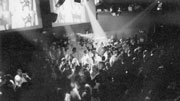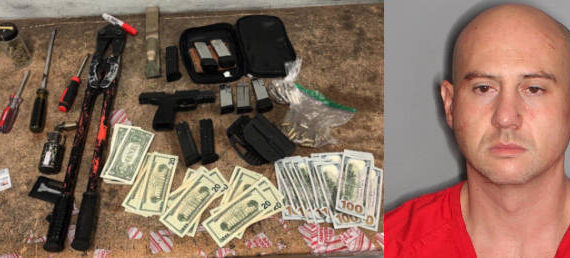1. ARO.SPACE: Postmod marvel starts with a bang, leaves design imprint on Seattle (see Manray, Houston Gallery), then is resold and slides downhill with slow, painful whimper.
2. MOE: Everything seemed fine at this prime Capitol Hill rock venue, then poof! it was replaced (see culprit ARO.space, above).
3. SPINTRON: Lesson One: Do not install $30,000 stereo system then play only treble-heavy CDs. Lesson Two: Pay taxes. Lesson Three: Make sure—whoops! Too late.
4. FENIX: The ever-beloved Thong Thursday is no more, thanks to this Pioneer Square mainstay’s unfortunate confluence of old construction and certain seismic movements during February of this year.
5. OK HOTEL: Same as above, minus the thongs. At least this historic rock stop still has its glory days preserved on celluloid; see Cameron Crowe’s Singles for the definitive Matt Dillon-enhanced snapshot of the ’90s Seattle scene.
6. VINYLIZED: Ravers come and go, and so do their clubs. This one fought the good all-ages fight, but eventually, alas, the subwoofer lay silent and still at this Alaskan Way hole-in-the-wall.
7. UNDERGROUND: This famous ’80s teen haven on the Ave showcased everything from the Dwarves to dance nights. Someone we know once had her hair maliciously set aflame right on the main floor, and she promptly broke the perp’s nose—yeah, it was that kind of place, but still sorely missed when it closed its doors.
8. ROMPER ROOM: Fear not—horny yuppies still meet and mate at this spot, only now they call it Watertown.
9. FOXES: How many drag queens does it take to screw in a lightbulb? Not enough, apparently, to keep this gay-dive-turned-trashy-hipster-hangout all lit up; it closed early this year but just may be back for another round.
10. THE EASY: Ah, sleazy Easy, wherefore art thou? Buried first under poor, doomed Spintron, and now reincarnated as a slick, soulless spot they call Ego.
11. OFF RAMP: Ghosts of grungies past still wander this Eastlake dive, but its reincarnation as Graceland—which has seen some of the best current rock bookings in the city—should soothe those savage beasts.
12. THE MONASTERY: Bathhouse/disco/drug haven of the ’80s goes down in glorious courthouse flames.
13. SAFARI: How could a gay sports bar on Capitol Hill not last forever? Now sadly replaced by the very unsporty Bad JuJu Lounge.
14. VELVET ELVIS: An incubator for Seattle’s current music scene, the all-ages club hosted matinee punk rock shows that attracted future members of bands like Modest Mouse and 764-HERO. It later offered these and other bands a place to play to youthful audiences that had been shut out of other clubs because of draconian city ordinances.
15. THE BACKSTAGE: The real bastion of alt-country before it lost its lease and handed the mantle to the Tractor. Four large and obnoxious pillars were always in the way, but nothing could stop the crystal-clear sound system from reaching every corner of this former infirmary.
16. RKCNDY: One of the two bookend clubs on either side of the Denny Way freeway overpass (the Off Ramp being the other) that ruled the Seattle scene during the early 1990s, when the city was discovered by the world. A huge, two-level, warehouse-type space, it has since been demolished and a large, ugly building is under construction on its site.
17. THE GORILLA GARDENS: A two-auditorium space on the edge of Chinatown was the site of some great Seattle punk shows. It was one of the first victims of Seattle’s late 1980s Teen Dance Ordinance; a police raid closed it.
18. SQUID ROW: The Pine Street club had no stage to separate performers from their audience, the beer was cheap, and you couldn’t buy the kind of atmosphere that this dump exuded. Arguably the first Seattle club with an all-punk booking policy, it couldn’t survive the scene’s growing success, as bands moved on to the likes of the Off Ramp and RKCNDY.
19. THE METROPOLIS: Seattle’s best idea of the early 1980s: an all-ages club just around the corner from Pioneer Square with dance nights, rock shows, and a general all-for-one feeling that hasn’t been reproduced. The site of more than a few famous scene legends (like the time junior noisemongers Mr. Epp enlivened a performance by throwing handfuls of hair clippings at the audience), the Met was just a memory by the time Seattle authorities got around to stamping out teen clubs later in the decade.
20. ASTOR PARK: The drinks were overpriced and the bathrooms were always flooded, but Astor Park was the big rock club in the city in the early 1980s and host to many national and international touring bands. It was eventually demolished. Peak Astor Park memory: Seeing a very young U2 in 1980. After playing all the songs from their first album, the band was out of material and had to repeat “I Will Follow” as their encore.




